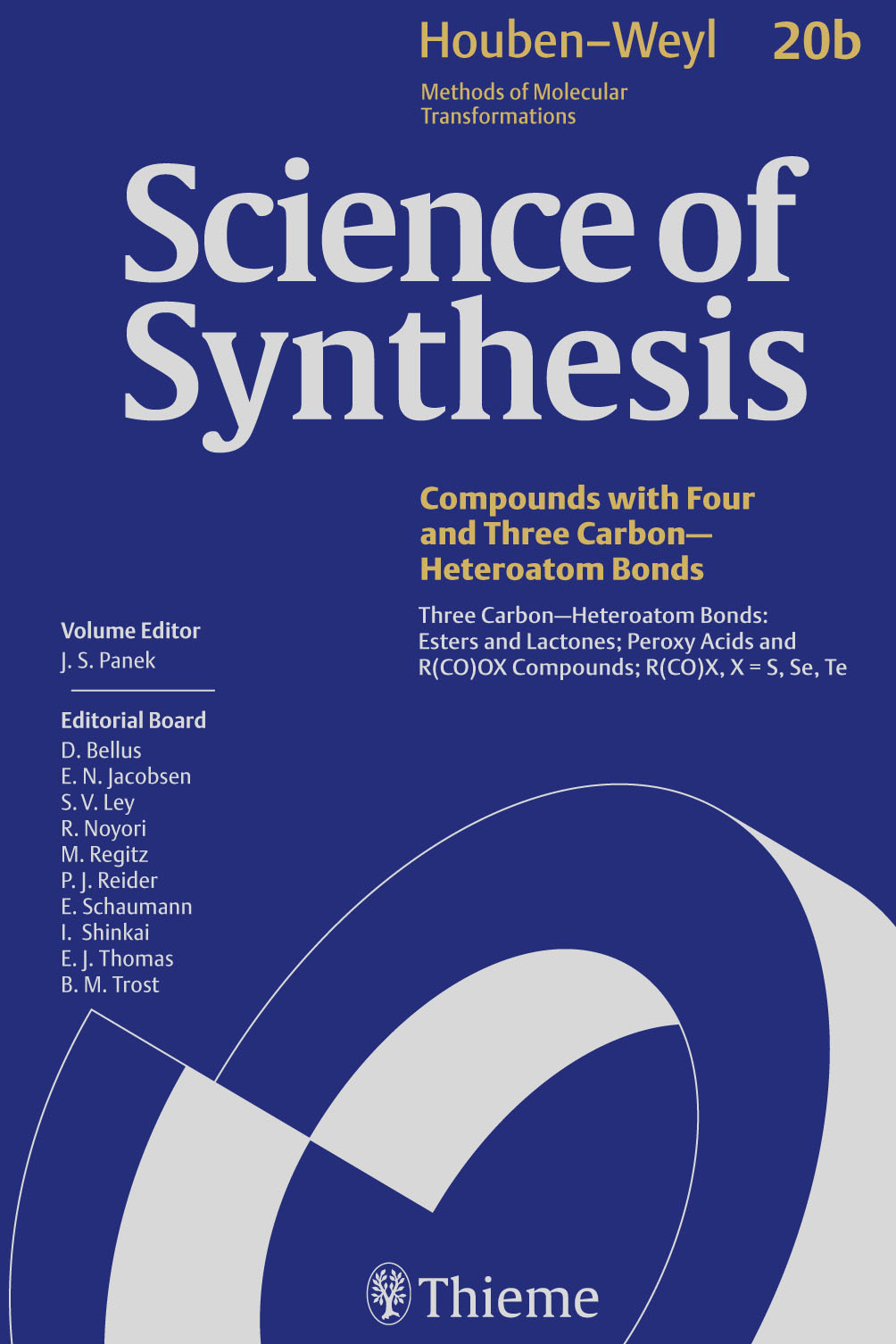You are using Science Of Synthesis as a Guest.
Please login to access the full content or check if you have access via20.6.1.4.7 Variation 7: The Keck Method
Please login to access the full content or check if you have access via
Maier, M. E., Science of Synthesis, (2007) 20, 1466.
Another method for the in situ generation of an active ester employs the reagent N,N′-dicyclohexylcarbodiimide in combination with 4-(dimethylamino)pyridine and 4-(dimethylamino)pyridine hydrochloride.[210] The latter additive is important since otherwise large amounts of the unwanted N-acylurea 146 are formed (Scheme 65). This is attributed to a low effective concentration of the alcohol. For example, without 4-(dimethylamino)pyridine hydrochloride, 4% of hexadecanolide is formed. In contrast, with the hydrochloride the yield is 95% (Table 13). Several additional examples are displayed in Table 14.[211–214]
Meeeee 88 Meeeeeeeeeee Meeeeeeee Meeee M,M′-Meeeeeeeeeeeeeeeeeeeeeee eee 8-(Meeeeeeeeeeee)eeeeeeee[888]
Meeee 88 Meeeeeeeeeeee Meeeee ee eee Meee Meeeee[888]
| e | Meee Meee | Meeee (%) ee Meeeeee | Meeee (%) ee Meeeeee | Mee |
|---|---|---|---|---|
| 8 | 88 | 88 | 88 | [888] |
| 8 | 88 | 88 | 88 | [888] |
| 88 | 88 | 88 | eeeee | [888] |
| 88 | 88 | 88 | – | [888] |
Meeee 88 Meee Meeeeeee ee Meeeeeeeeeeeeeeeee Meeee eee Meee Meeeee[888–888]
| Meeeeee | Meeee (%) | Mee |
|---|---|---|
 |
88e | [888] |
 |
88 | [888] |
 |
88 | [888] |
 |
88e | [888] |
e Meeeeee eeeeee ee 88% ee eee Meeeeeeee eeeeee.
e Meeeeee eeeeee ee 8% ee eee Meeeeeeee eeeeee.
References
| [210] | Meeee, M. M.; Meee, M. M., M. Mee. Meee., (8888) 88, 8888. |
| [211] | Meeeeeee, M.; Meeeee, M. M. M.; Meeeee, M. M., Meeeeeeeeee Meee., (8888) 88, 8888. |
| [212] | Meee, M. M.; Meeee, M. M.; Meeee, M. M., M. Mee. Meee., (8888) 88, 888. |
| [213] | Meeee, M. M.; Meeeee, M. M.; Meeee, M. M.; Meeeee, M.; Meeee, M. M., M. Me. Meee. Mee., (8888) 888, 8888. |
| [214] | Meee, M. M.; Meeee, M. M., M. Mee. Meee., (8888) 88, 8888. |
Meeeeee Meeeeeeeeee
- 8.Meeeee-Meee, (8888) M 8-8, 888.









